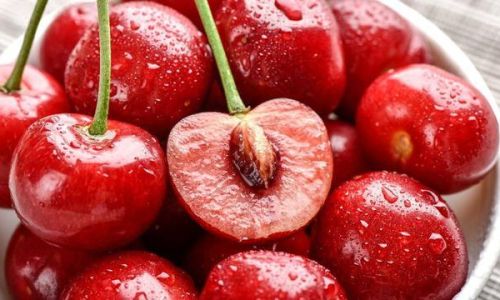When the warm sun kisses the earth in spring and early summer, one of the sweetest treats nature offers is the juicy, vibrant cherry. Whether you’re a fan of the dark, almost velvety sweetness of Bing cherries or the lighter, tangier taste of Rainier cherries, finding the perfect batch can turn an ordinary snack into an extraordinary experience. But how does one navigate through the piles of cherries at the market, ensuring that every bite is as delightful as the last? This comprehensive guide will walk you through the art of selecting delicious cherries, from understanding the varieties to inspecting for freshness and quality.
Understanding Cherry Varieties
First and foremost, familiarity with the different types of cherries is crucial. Broadly speaking, cherries are categorized into two main groups: sweet cherries and tart cherries. Sweet cherries, as their name suggests, are the ones most commonly enjoyed fresh or in desserts. Tart cherries, on the other hand, are often used for cooking, baking, or making preserves due to their sharper flavor.
Sweet Cherries:

- Bing Cherries: Renowned for their large size, dark red color, and rich, sweet flavor. They are excellent for eating raw or incorporating into recipes that require a bold cherry taste.
- Rainier Cherries: A beautiful variety with a creamy yellow hue and a slightly milder, sweeter taste. Their unique appearance and delicate flavor make them a favorite among cherry enthusiasts.
- Lambert Cherries: Smaller but intensely flavored, these cherries are perfect for those who prefer a more concentrated sweetness in a compact package.
- Santina Cherries: Known for their firm texture and balanced sweetness, they are ideal for shipping and storing, maintaining their freshness over longer periods.
Tart Cherries:
- Montmorency Cherries: The most common type of tart cherry, these are deeply red and have a sharp, tangy taste. They are excellent for pies, jams, and health supplements.
- Balaton Cherries: Larger than Montmorency, with a slightly sweeter edge, they are versatile enough to be used both fresh and in cooking.
Inspecting for Freshness
Once you’ve decided on the type of cherry you crave, the next step is to ensure they are fresh. Here are some key indicators:

- Color: Sweet cherries should have a uniform, vibrant color with no dull spots or discoloration. Tart cherries, while often darker, should also appear fresh and not faded.
- Firmness: A gentle squeeze should reveal a cherry that is firm but not overly hard. Avoid cherries that are soft or mushy, as they may be overripe or bruised.
- Skin: The skin should be smooth and shiny, without cracks, wrinkles, or mold. Any signs of moisture or stickiness could indicate spoilage.
- Stem Attachment: If possible, look for cherries with stems still attached. This is a good indicator of freshness, as cherries without stems may have been handled roughly or stored for longer periods.
- Smell: Fresh cherries should have a subtle, sweet aroma. If they smell sour, musty, or have no scent at all, it’s best to pass.
Seasonality and Source
Cherries are a seasonal delight, typically available from late spring to early summer. Knowing when your local cherries are in season can help ensure you get the freshest batch possible. Additionally, consider the source of your cherries. Locally grown cherries are often fresher and more flavorful than those imported from distant regions. If buying from a farmer’s market or local farm stand, ask about their harvesting and storage practices. Freshly picked cherries, ideally consumed within a day or two of harvest, offer the best taste and texture.
Storage and Handling
Once you’ve selected your perfect cherries, proper storage is key to maintaining their freshness. Sweet cherries should be stored in the refrigerator, ideally in a plastic container lined with a paper towel to absorb excess moisture. They can last up to a week when handled properly. Tart cherries, due to their higher acidity, tend to keep a bit longer but should still be refrigerated.

Avoid washing cherries until you’re ready to eat them, as moisture can accelerate spoilage. If you need to wash them, use cold water and dry them thoroughly with a paper towel or soft cloth.
Enjoying Your Cherries
Now that you’ve mastered the art of selecting delicious cherries, it’s time to enjoy them! Whether you’re munching on them straight from the fridge, incorporating them into a salad, baking a cherry pie, or making a batch of cherry jam, the sweet and tangy flavors of cherries are sure to delight your taste buds.

Remember, cherries are not just a treat; they are packed with nutrients like antioxidants, vitamins, and minerals that can benefit your health. So, as you indulge in this seasonal delight, you can do so guilt-free, knowing that you’re nourishing your body with nature’s bounty.
In conclusion, selecting delicious cherries involves understanding the varieties, inspecting for freshness, considering seasonality and source, and handling them properly. With these tips in mind, you’ll be able to enjoy the sweetest, most flavorful cherries every season. Happy cherry picking!






0 comments